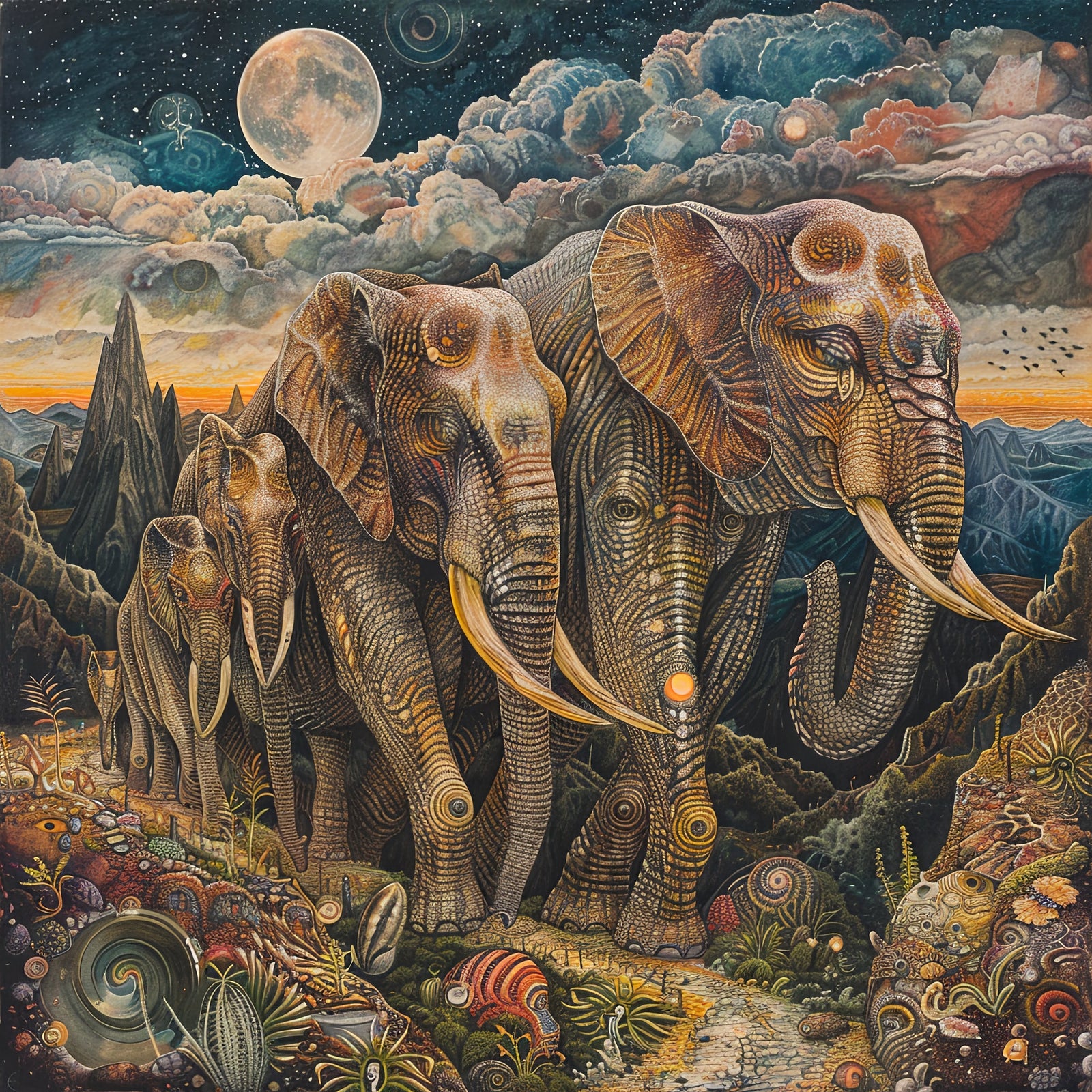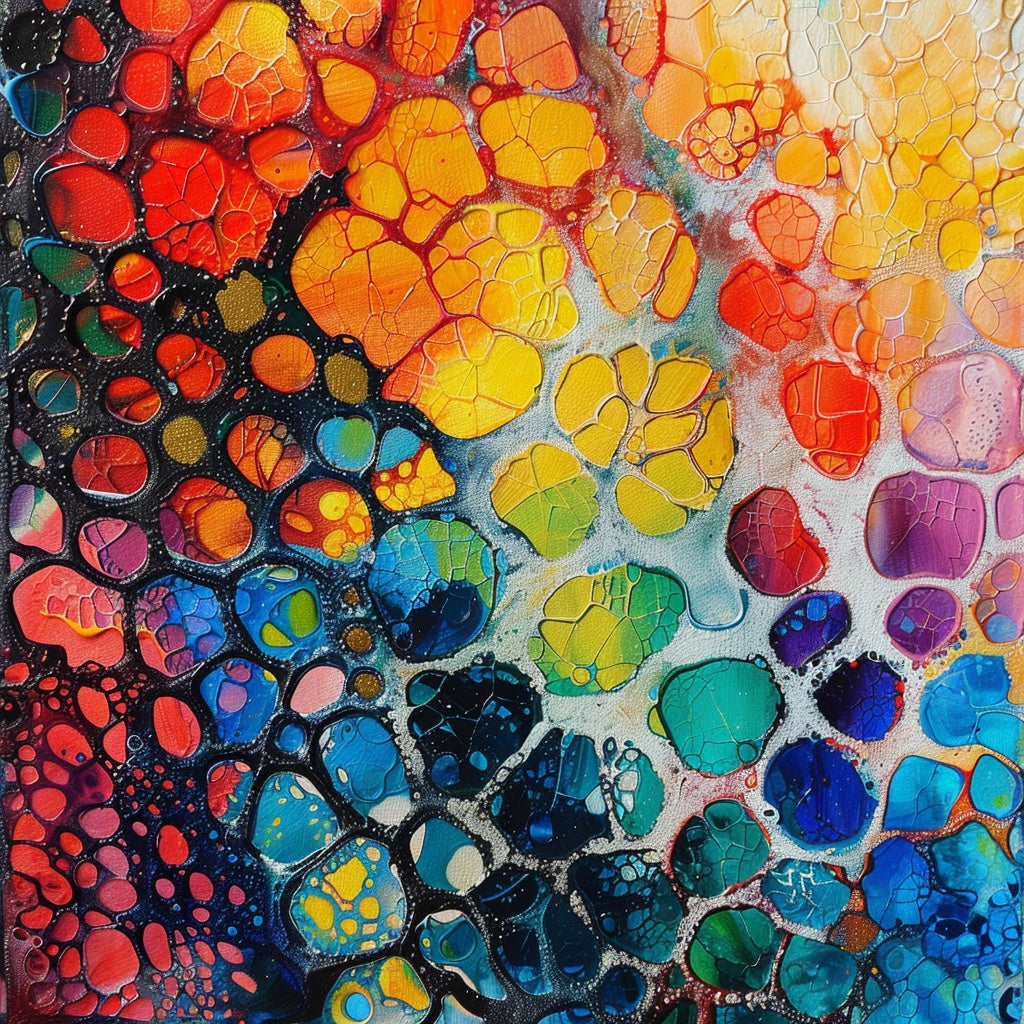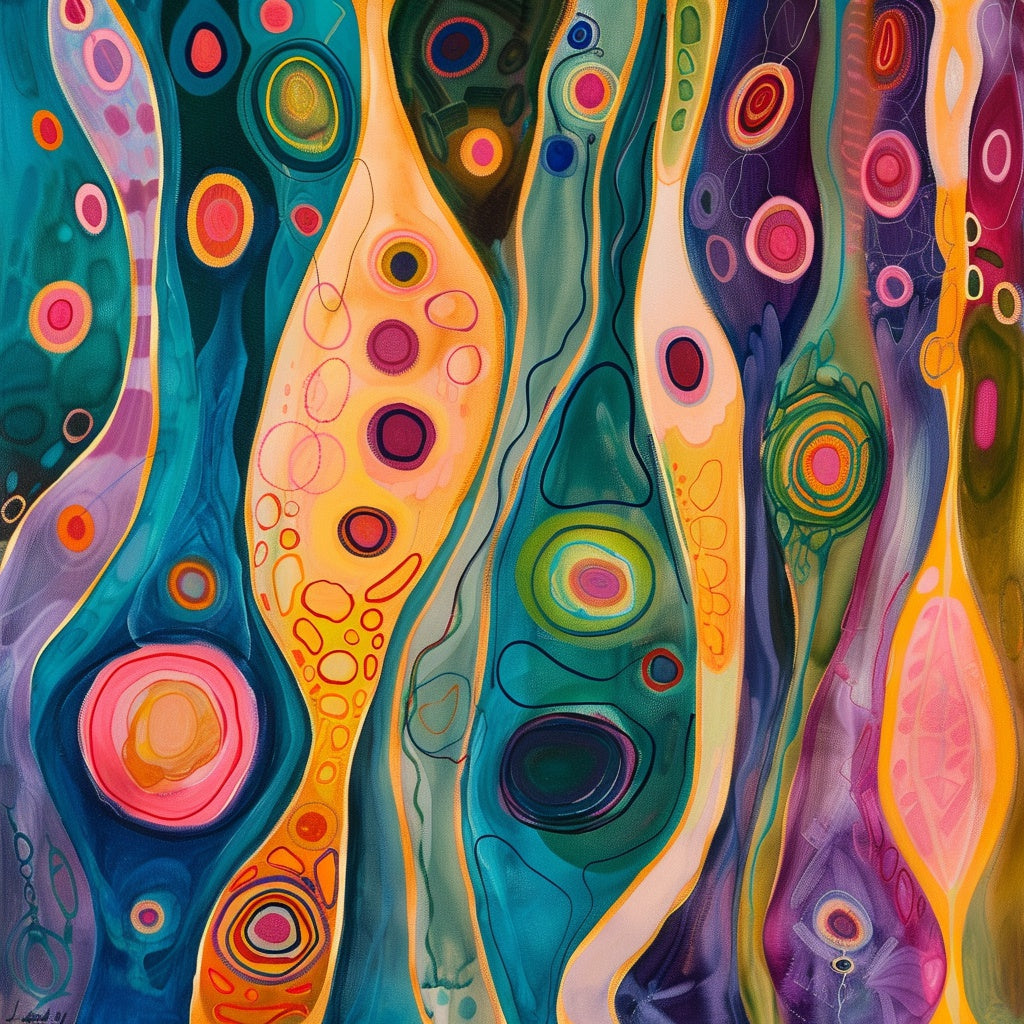The AI Revolution in Abstract Art: A New Era of Creativity
Abstract Art and AI: A Transformative Partnership
Abstract art, known for its non-representational approach, has always pushed the boundaries of artistic expression, focusing on emotions, concepts, and individual interpretations. The arrival of artificial intelligence (AI) is significantly changing this landscape, with AI algorithms not only generating impressive abstract artworks but also driving artistic exploration in innovative directions. This new intersection between art and technology raises fundamental questions about the nature of creativity and the role of humans in the creative process.
How AI Creates Abstract Art
AI's ability to create abstract art stems from its capacity to rapidly process and reinterpret visual information, enabling explorations of abstract forms previously considered impossible. AI algorithms can identify the underlying structures, styles, and relationships between different elements by being trained on large datasets of existing abstract art. This learning enables the generation of new compositions that adhere to abstraction principles while introducing novel and unexpected forms. Two primary technologies drive AI art generation: Generative Adversarial Networks (GANs) and Variational Autoencoders (VAEs). GANs use two neural networks, a generator, and a discriminator, that work in tandem to create increasingly convincing abstract art. VAEs encode input data into a compressed format and then decode it to generate new outputs, capturing the essence of the original data while introducing new elements. This dual approach allows AI to produce diverse abstract art, mimicking and innovating on existing styles.
Techniques and Challenges in AI Abstract Art Creation
While AI excels at generating abstract art, it faces challenges. One significant hurdle is ensuring AI-generated art goes beyond merely imitating existing styles and displays originality and creativity. Researchers are exploring techniques like creative adversarial networks to encourage AI to deviate from learned norms while still maintaining aesthetic principles. Another challenge is determining the correct amount of human input in the creation process. While AI can generate art autonomously, human involvement is often necessary for selecting training data, choosing algorithms, and refining generated outputs. This raises complex questions about authorship and whether AI can be considered an independent artist. The blurring lines between human and machine creativity challenge our definition of an artist.
The Indispensable Human Element in AI Art
Despite the expanding capabilities of AI, human creativity remains crucial in the AI art creation process. Artists frequently use AI to explore new ideas, experiment with different styles, and push the boundaries of their own artistic expression. AI facilitates a collaborative relationship between humans and machines, where artists provide input, guidance, and feedback to the AI algorithms, shaping the creative process and ensuring the generated art aligns with their artistic vision. This collaborative model challenges traditional notions of authorship and opens up new possibilities for artistic exploration. In this model, artists define the parameters, and AI fills in the details, leading to artworks that might not have been possible otherwise.
The Future of AI in Abstract Art
The human brain operates at multiple levels of abstraction, from basic neural processes to high-level thinking and consciousness. In its current state, AI demonstrates a relatively lower level of abstraction yet has the potential to reach higher levels due to its capacity to rapidly process and store data. This could lead to AI generating art with greater complexity, originality, and even a form of consciousness. The development of AI art generators has increased the creation of abstract art, with platforms like Deep Dream Generator, OpenArt, and Synthetik providing tools for generating diverse forms of abstract art. These platforms often offer pre-trained models for generating art with specific styles or characteristics, such as Cubism, Abstract Expressionism, or geometric abstraction. Social media platforms are also filled with discussions and posts regarding AI-generated images, showing the broad interest in this new art form.
Applications and Implications of AI Abstract Art
The applications of AI-generated abstract art are diverse. AI offers artists new tools and techniques to explore abstract concepts and emotions, enhancing creative expression. It also plays a role in digital art, with AI-generated pieces used in displays, online platforms, and virtual environments. AI can generate abstract patterns and designs for various applications, including textiles, fashion, and interior design. Moreover, AI is used in education and research to analyze artistic styles and generate new insights into the creative process. AI can also refine existing images, add or remove content, and explore new ways to present artwork. However, the increasing use of AI in art raises concerns about the potential commodification of art, with a shift from emotional resonance to mere aesthetic appeal. The challenge is to use AI to enhance, rather than replace, human creativity. Interestingly, some research suggests people may prefer AI-generated art, raising questions about how this shift in preference might impact the art world and the value placed on human creativity.
One notable example of AI-generated abstract art is the "AI Portrait of Edmond de Belamy," created using a GAN and sold at auction for $432,500, which ignited discussions about the nature of art and AI's role in the creative process. This event highlights the increasing intersection of technology and art and how it provokes essential questions about originality and authorship. AI's ongoing evolution is likely to significantly impact how we create, experience, and interpret art. We can anticipate even more innovative and thought-provoking developments in AI-generated abstract art as AI advances. The potential for AI to achieve higher levels of abstraction and generate art with greater complexity is an exciting prospect. However, it remains essential to balance human creativity with AI assistance, ensuring that AI serves as a tool to enhance, not replace, the human element in art.
The future of abstract art lies in a collaborative approach, with human artists and AI algorithms working together to explore new creative frontiers and redefine the boundaries of artistic expression.
Exploring Abstract Art with AI - Deep Dream Generator, accessed February 11, 2025, https://deepdreamgenerator.com/blog/abstract-art-and-ai
How AI Portraits Are Evolving & Becoming Art - Snapbar, accessed February 11, 2025, https://snapbar.com/blog/the-art-of-ai-portraits-unveiling-the-masterpieces
The Importance of Abstract Art in the Age of Artificial Intelligence | by John Emmett | Medium, accessed February 11, 2025, https://medium.com/@jwremmett/the-importance-of-abstract-art-in-the-age-of-artificial-intelligence-0872cb93ebc4
The Best Text to Abstract Art AI Generator (for Free) - OpenArt, accessed February 11, 2025, https://openart.ai/generator/abstract-art
The Best Text to Abstract Painting AI Generator (for Free) - OpenArt, accessed February 11, 2025, https://openart.ai/generator/abstract-painting
The Future of AI Art and its Potential Interactions with the Art Industry - NHSJS, accessed February 11, 2025, https://nhsjs.com/2023/the-future-of-ai-art-and-its-potential-interactions-with-the-art-industry/
The Creativity of Artificial Intelligence in Art - MDPI, accessed February 11, 2025, https://www.mdpi.com/2504-3900/81/1/110
AI Is Blurring the Definition of Artist | American Scientist, accessed February 11, 2025, https://www.americanscientist.org/article/ai-is-blurring-the-definition-of-artist
What Is AI-Generated Art? | IxDF - The Interaction Design Foundation, accessed February 11, 2025, https://www.interaction-design.org/literature/topics/ai-generated-art
Transforming Visual Art: Image Synthesis through Generative AI Models - Webisoft, accessed February 11, 2025, https://webisoft.com/articles/generative-ai-models/
Art in an age of artificial intelligence - PMC, accessed February 11, 2025, https://pmc.ncbi.nlm.nih.gov/articles/PMC9749485/
Supersmart: the role of abstraction in AI, Art, and Life - SWARM Engineering, accessed February 11, 2025, https://swarm.engineering/insights/x8wlx509phssc4lm08v1w1ww44pv8z
Create Stunning Abstract Art with AI - PIXEL DOJO, accessed February 11, 2025, https://pixeldojo.ai/abstract
Revolutionizing Creation: AI Art Use Cases - Adobe Firefly, accessed February 11, 2025, https://www.adobe.com/products/firefly/discover/ai-art-use-cases.html
Human perception of art in the age of artificial intelligence - Frontiers, accessed February 11, 2025, https://www.frontiersin.org/journals/psychology/articles/10.3389/fpsyg.2024.1497469/full



Leave a comment (all fields required)